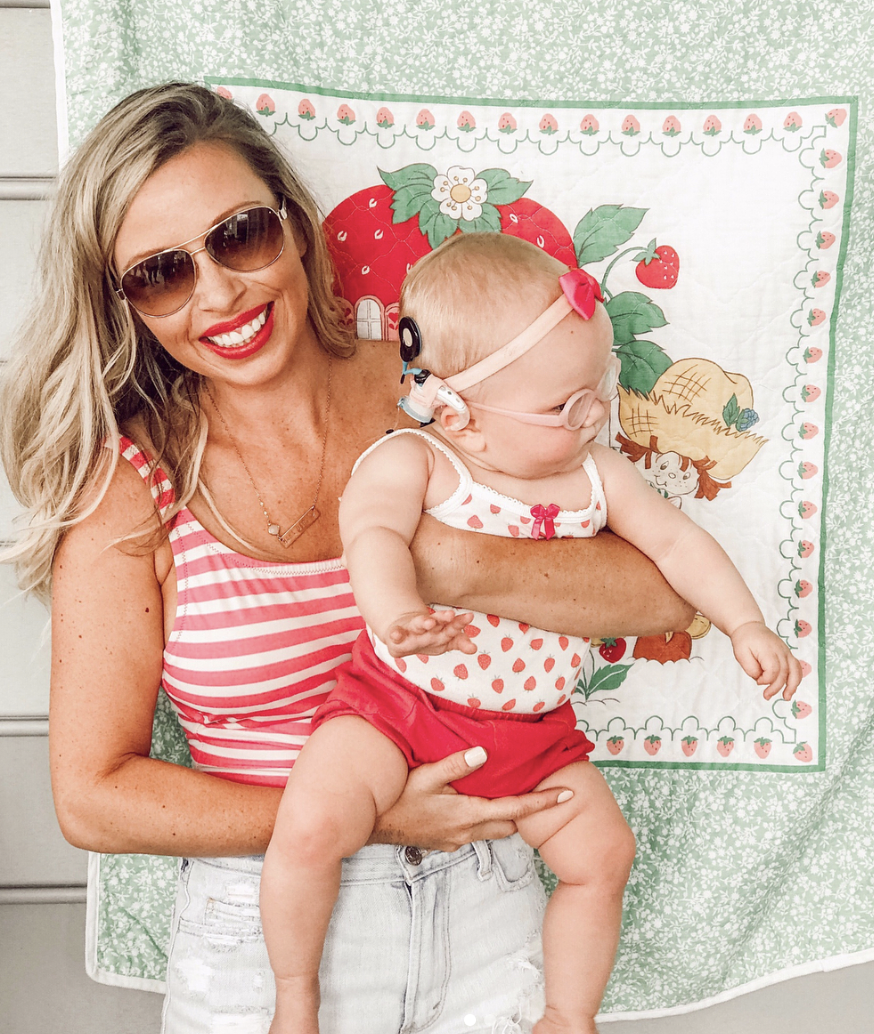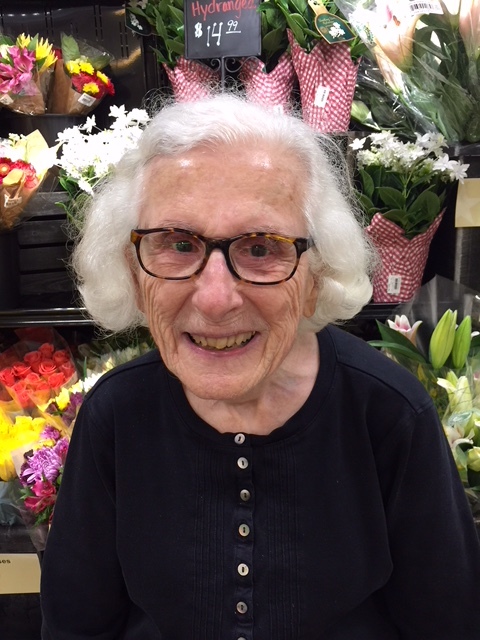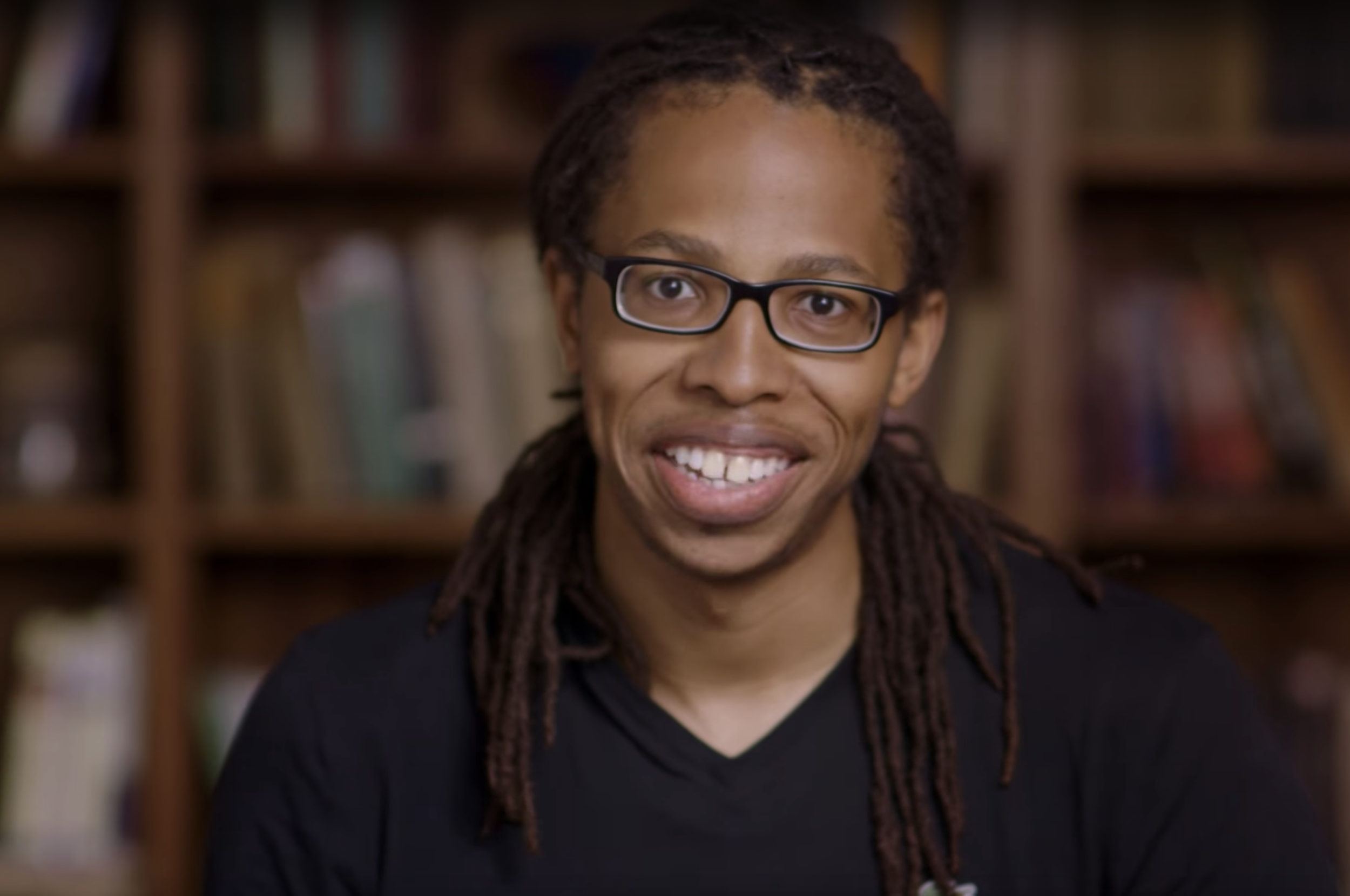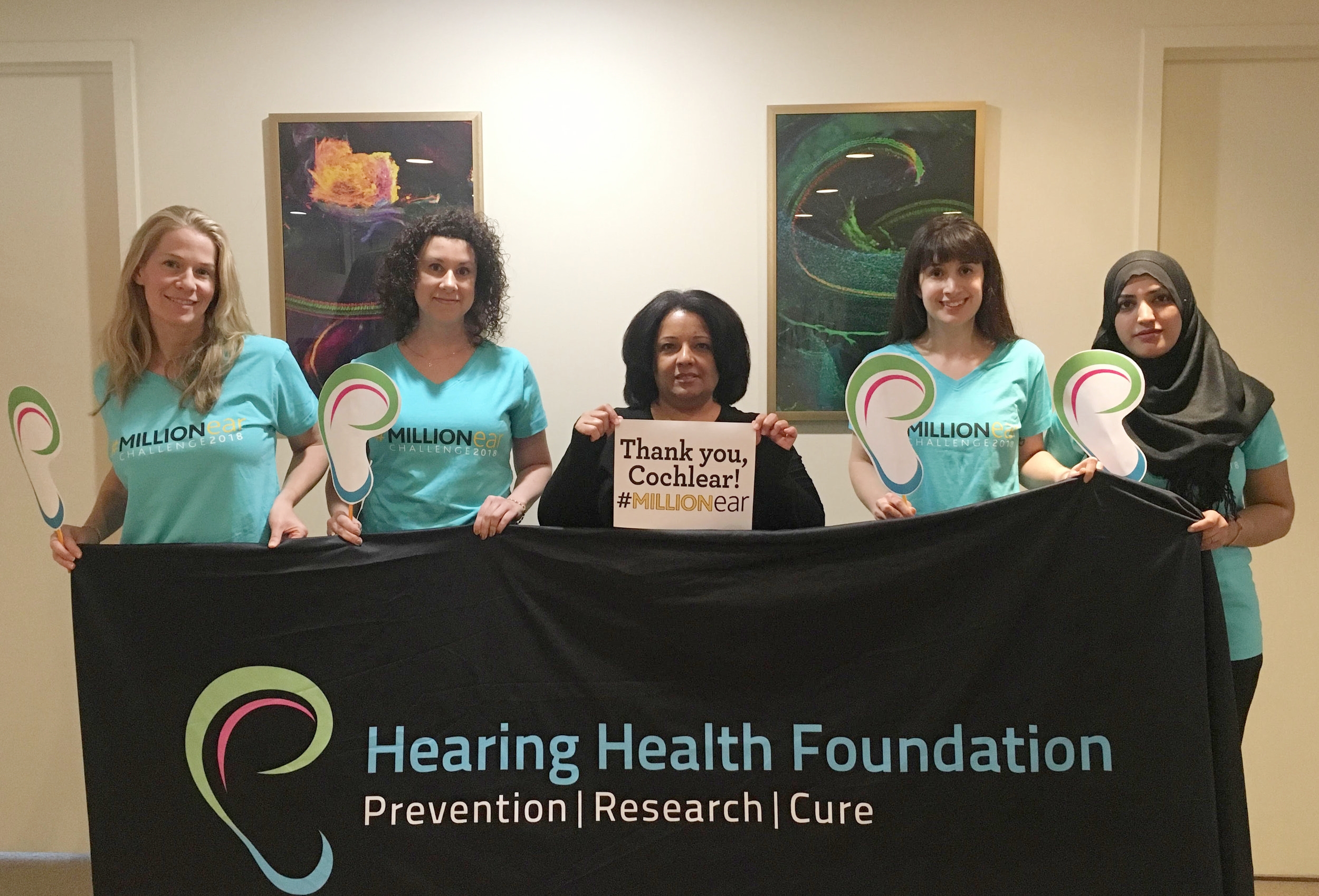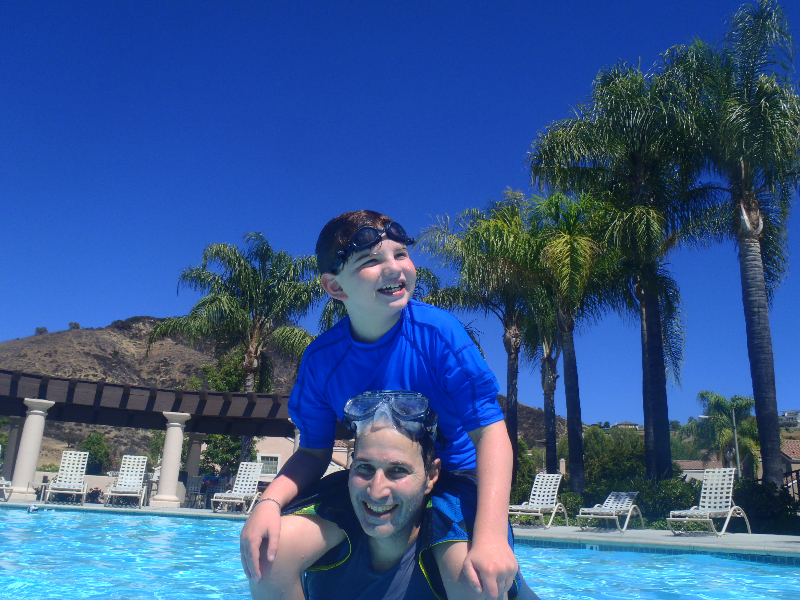Cochlear implantation has one of the most favorable risk–benefit ratios of any surgical procedure in the U.S., offering significant communicative benefit while incurring little risk.
Miracle Moments
By Casey Dandrea
Virginia toddler Charlotte (Charly)’s first experiences with sound using hearing aids captivated millions. The video, taken in 2017 when Charly was an infant, aired across multiple local television networks and went viral on the internet.
Photo credit: Christy Keane (@theblushingbluebird)
Charly’s mother, Christy Keane, is heard fighting back tears in response to her daughter’s expressions. “I’ve never seen that face before. You’re going to make me cry,” Christy says as Charly displays a smile and her eyes light up. For the first time, Charly was visibly reacting to Christy’s voice.
Charly’s one-minute viral video debut was more than heartwarming—it was educational. With technology, children born with hearing loss can communicate just like those with typical hearing.
Christy’s understanding of profound hearing loss before Charly’s diagnosis was minimal. “I had never met a deaf person in my life and had absolutely no knowledge on hearing loss or intervention options,” Christy says. Following Charly’s birth, Christy immediately surrounded herself and family with a team of supportive specialists to earn more about pediatric hearing loss and options for treatment.
Charly was diagnosed with a bilateral profound sensorineural hearing loss at age 1 month after failing all three hearing tests as a newborn. She was fitted with hearing aids at 2 months old, which she wore for eight months prior to her cochlear implant (CI) surgery in June 2018. Christy and her husband chose cochlear implantation for their daughter because they wanted to give Charly the best access to speech and sound for her needs.
Christy and Charly. Photo credit: Christy Keane (@theblushingbluebird)
Having had access to sound since infancy, Charly will enjoy the same opportunities as a child with typical hearing. Children who receive early intervention for hearing loss reduce their risk of falling behind in speech and language acquisition, academic achievement, and social and emotional development.
The video’s reception inspired Christy to chronicle her daughter’s progress on Instagram. Now with one hundred thousand followers, Christy is thankful to have touched so many individuals all over the world. Her #miraclemomentsoftheday posts, in which she records Charly’s reactions to her daily CI activation (and previously her hearing aids), are especially popular.
Christy is proud to have created a forum that provides encouragement to families of children with hearing loss. “Every day I receive a message from a parent of a newly diagnosed child and I can remember the exact emotions they are experiencing,” she says “I love to be an example of how fulfilling it is to be a parent-advocate and how quickly your perspective changes as you learn more about hearing loss and language options.”
Christy hopes to change perceptions of hearing loss offline, too. She volunteers with Virginia Hands & Voices, an organization that helps families of children with hearing loss. Ultimately, Christy is working to provide an atmosphere for families with children with hearing loss to come together to celebrate their achievements and share their experiences.
Casey Dandrea is an HHF intern studying journalism at Long Island University Brooklyn. For more on Charly’s progress, see Christy’s Instagram.
The Miracle of the Cochlear Implant
By Barbara Sinclair
Barbara and her husband, Charles, who also has a hearing loss, in 2004.
My mother didn’t realize I couldn’t hear until one afternoon when I was about 3 years old. I was happily playing on the floor with my younger brother. Suddenly I glanced up and saw Tex looking at Mother, who had clapped her hands. Not hearing any noise, I didn’t respond. Frantic with worry, Mother called Daddy telling him I couldn’t hear. She then took me to the doctor. No wonder I was slow in talking! Sound meant nothing to me. I didn’t know that I needed to talk to express feelings.
A teacher trained at St. Louis’s Central Institute for the Deaf taught me how to speak and read lips at home in Cleveland. I never heard a sound until I got my first hearing aid around age 9. The earliest audiometric evaluation I still have is from 1984, when I was 55, and it showed a profound hearing loss in my right ear. My left ear was even worse, termed “dead.” With training in speaking and lip-reading (speech-reading), I stayed in a mainstream school with the help of a hearing aid, although I really depended on lip-reading to get by. The hearing aid gave me a sense of being able to communicate, but it didn’t help much when it came to understanding speech.
I imagine anyone born with a hearing loss doesn’t always understand why they can’t hear. Many times I had wondered this myself. My doctors are also unaware of the cause. I speak a little differently, with a metallic sound and slight accent, sometimes accenting the wrong spots as I speak. However, this did not impede school or, later, work. After I graduated from Arizona State University, I held jobs in bookkeeping, the library, and human resources.
Sounds such as shouting, banging, ringing, and clanging all sound the same to me. What does a ticking clock sound like? Tap-tap, or click-click? Or running water? To me, these sound the same. I can’t hear the wind rattling the window. I feel it. I can’t hear the fury of a rainstorm. I feel it.
It’s hard for me to detect changes in speech tones or pitch, or to tell a low voice from a higher one. I read that a child’s laughter is like the delightful rippling of a water stream. I can’t identify that sound. But even though I can’t enjoy music or follow group conversations, there are some advantages to not hearing—I sleep without any interfering noises.
In 2001, our audiologist mentioned cochlear implants to my husband Charles, then age 72, who also has a hearing loss as well as being blind from retinitis pigmentosa. I researched cochlear implants and found this description from ABC News. It dates from 2001 but is still accurate today: “For those with normal hearing, sound enters the ear, triggering hair cells in the cochlea, a spiral tube filled with fluid. Those excited hair cells send information to the hearing nerve, which sends signals to the brain, allowing us to hear.
“But, if deaf people have damaged hair cells in their cochlea, an implant can also do the same work. With an implant, sound is picked up by a tiny microphone connected by a cord to a small box outside the ear. The box turns sound into a signal—transmitting it through the skin, straight into the skull. Electronics in the skull send the signals straight to the hearing nerve, bypassing the cochlear hair cells that don’t work.”
We went to see Wesley Krueger, M.D., an otolaryngologist in San Antonio. After a series of tests, Dr. Krueger told Charles that his hearing wasn’t actually severe enough to be a candidate for an implant. He was stunned for a minute, and then asked the doctor if there was a possibility for me to get an implant. Then it was my turn to be stunned.
Weeks later, following my own series of tests, Dr. Krueger came into the room, grinning, and announced, “You are a candidate for a cochlear implant!” I was speechless as he showed me the components of “the bionic ear”: the external hearing aid-like processor and transmitter; the receiver under the skin that connects to electrodes; the magnet that holds the implant in place on the skull.
I had the surgery a month later, when I was 72 years old. A week after the bandage from my right ear was removed, I felt dizzy, but there was almost no pain at all. I then realized that the implant made me unable to hear with my hearing aid. Whatever hearing I had was gone.
For 30 days I agonized whether I’d be able to hear. The incision behind the ear must heal for that period before the bionic ear can be activated. Then, finally, activation day came—and was successful! There were beeps and squawks, but I could hear! Relief enveloped me as I progressed through the programming of the device. Sounds were distorted and muddled, but they were all new to me.
It has been 17 years since the implant. My device has been reprogrammed again and again until clarity reached its peak. I still don’t understand speech perfectly, but I do hear sounds I had not heard before: a ticking clock, running water, a humming car motor—and yes, the laughter of our four grandchildren.
Barbara Sinclar lives in Texas. She is a Faces of Hearing Loss participant.
Advancing Accessibility in the Audiology Profession
By Lauren McGrath
Born with a profound sensorineural hearing loss, Jessica Hoffman, Au.D., CCC-A, never believed she could become an audiologist. In fact, she didn’t consider the profession until her final year as a biopsychology undergraduate at Tufts University.
By then, Dr. Hoffman was the recipient of successful hearing loss intervention and treatment for two decades. Diagnosed at 13 months, she was fitted with hearing aids by age two, practiced speech and hearing at the New York League for the Hard of Hearing (today the Center for Hearing and Communication) until five, and learned American Sign Language (ASL) at 10. She pursued a mainstream education since preschool with daily visits from a teacher of the deaf. Dr. Hoffman received cochlear implants at ages 14 and 24, respectively and, in college and graduate school, enjoyed a variety of classroom accommodations including ASL interpreters, CART, C-Print, notetakers, and FM systems.
After Tufts, Dr. Hoffman worked as a lab technician at Massachusetts Eye and Ear as her interests in studying hearing began to grow. But she doubted her abilities to perform key tasks in audiology, like speech perception tests and listening checks with patients. After speaking with others in the field with hearing loss, she became less apprehensive. Engaging with mentors like Samuel Atcherson, Ph.D., and Suzanne Yoder, Au.D., who have greatly advanced opportunities for individuals with hearing loss in audiology, further cemented Dr. Hoffman’s self-confidence. In 2010, she completed her Doctor of Audiology from Northwestern University.
Today, Dr. Hoffman is happy to work with both children and adults at the ENT Faculty Practice/Westchester Cochlear Implant Program in Hawthorne, NY. She takes pride in helping her patients realize that they are not alone with hearing loss and that technology, like her own cochlear implants, can provide immense benefits to communication. Dr. Hoffman is motivated to help her patients understand that hearing loss does not define who one is and can be viewed as a gain rather than as a limitation.
Dr. Hoffman’s career is not exempt from challenges. Fortunate to receive accommodations as a child and young adult, she is disappointed by the tools that are missing in a field that serves those with hearing loss. Though she credits her own workplace as being very understanding, Dr. Hoffman points out the difficulties she experiences during team meetings and conversations with patients who speak English as a second language. She is grateful to have considerate colleagues who will repeat themselves as needed or offer to facilitate verbal communication with non-native English-speaking patients.
At audiology conferences, however, necessities like CART, FM systems, and/or interpreters are often lacking for professionals with hearing loss. Dr. Hoffman and others with hearing loss in the audiology field have petitioned to encourage accessibility at such events. She has had to take on the responsibility of finding CART vendors for conference organizers to ensure her own optimal listening experience. She reports being brushed off by meeting leaders and a sense of doubt in her abilities and those of her colleagues with hearing loss.
Dr. Hoffman also wishes to see greater accessibility in audiology offices nationwide, including recorded speech perception materials, captioning for videos or TV shows in the waiting room, and email exchanges with patients, rather than phone calls. She’d like all audiology staff to be well-versed in communicating with people with hearing loss and to have a strong understanding of the Americans with Disabilities Act (ADA) as it pertains to hearing loss. Dr. Hoffman also thinks facilities would benefit from hiring ASL interpreters or Cued Speech transliterators as needed. Her ideas would help professionals like her and patients alike.
Accommodations for people with hearing loss and other disabilities in academics, public sectors, and the workforce—audiology included—should be provided without question, says Dr. Hoffman, who has had the burden of reversing many people’s misconceptions about her capability to thrive independently in her career. “The self-advocacy never ends, but it has made me stronger and more confident in my own abilities as a deaf person. I am proud to have a hearing loss because it has shaped me into the person I am today.”
Receive updates on life-changing hearing research and resources by subscribing to HHF's free quarterly magazine and e-newsletter.
The Listening Project
By Vicky Chan and Lauren McGrath
“Most people still assume that if a person is deaf, they’re not able to speak,” narrates Jane Madell, Ph.D., in the opening moments of her documentary film “The Listening Project,” released in March 2018. Her statement sets the tone for the following 38 minutes of personal stories that shatter stigmas about hearing loss.
A New York City-based pediatric audiologist, speech language pathologist, and auditory verbal therapist, Madell created the documentary with award-winning filmmaker Irene Taylor Brodsky to reveal how technology has improved communication—and life—for people with hearing loss.
Richard, a cochlear implant recipient, is one of the participants in "The Listening Project" who works as a software engineer.
Brodsky captured interviews of 15 individuals with hearing loss, most of whom Madell treated when they were children. Madell says filming allowed her to reconnect with her former patients to “see what they had to say about growing up with a hearing loss and what advice they might have for parents of newly identified children with hearing loss.”
The subjects of “The Listening Project” are vibrant young adults living and working all over the world—connected by their gratitude for the technologies and treatments that enable them to hear and talk. The majority are cochlear implant recipients, while the remainder wear hearing aids. They experienced similar anxieties, including not being able to hear everything in social settings, disclosing hearing loss to new acquaintances, and accepting their hearing loss.
If not for modern medical progress, the film’s subjects may not ever have been able to overcome these hurdles. When Madell began her career in audiology 45 years ago, hearing loss treatments were very restrictive. Only children with mild to moderate hearing loss could hear well with hearing aids, and the Food and Drug Administration had not yet approved cochlear implants. Such limitations challenged Madell emotionally early in her practice. Though she smiled and appeared optimistic in front of her patients and their families following a hearing loss diagnosis, she knew how hard they would need to work with inadequate accommodations for their children to succeed.
Madell’s former patients and millions of others are fortunate changes in hearing technology and policies in recent decades have been dramatic. “We are so lucky we live now and not 30 years ago, 40 years ago,” says one. Another young man adds that the ability to communicate and feel comfortable doing so is “a core human value.” Advancements have made it possible for children with hearing loss to learn spoken language, which Madell believes is critical for educational, social, and professional development and gives them options they would not have otherwise.
Madell hopes the personal stories in “The Listening Project” will help parents of newly diagnosed children, as well as legislators, educators, and healthcare workers. “Parents of children with hearing loss have told me that if they had seen the film before the diagnosis, it would have been easier to deal with,” she says. It shows parents that with the resources and hearing technology available today, hearing and speech are possible for every child.
To learn more about the film for either personal or educational use, visit thelisteningprojectfilm.org.
Cochlear to Support Hearing Research By Reaching One Million Ears
Today marks the start of Better Hearing & Speech Month (BHSM), a campaign to advance public knowledge of communication disorders. To celebrate, international hearing implant manufacturer Cochlear is launching the #MillionEar Challenge with the goal of informing one million people about the importance of hearing health and research.
Proceeds from the campaign will benefit Hearing Health Foundation (HHF)’s longstanding Emerging Research Grants (ERG) program. Cochlear has pledged to donate to ERG when the #MillionEar Challenge is met.
“Awareness is at the heart of Hearing Health Foundation's efforts to prevent, treat, and cure hearing loss," said Nadine Dehgan, HHF’s Chief Executive Officer. "I am deeply grateful Cochlear is committed to raising awareness of hearing loss, which will inspire more to pursue hearing tests and life-changing treatments."
HHF staff thanks Cochlear in their own #MillionEar Challenge shirts.
Cochlear’s generous gift will allow HHF to continue funding up-and-coming scientists who investigate various hearing and balance conditions. Such funding has historically led to the development of many new treatments including cochlear implants which, today, benefit more than 300,000 people worldwide.
You can support the #MillionEar campaign with the purchase of a t-shirt, available in child and adult sizes. Read the full press from Cochlear release here.
Is It Overstimulation?
By Eric Sherman
My younger son Cole has been wearing cochlear implants (CI) since 2005. He was barely a toddler, between 18 and 24 months old, when he rejected them.
The initial response from our audiologist was, “We just mapped your son, just do your best to keep the processor on his head.” Unique to every CI wearer, mapping adjusts the sound input to the electrodes on the array implanted into the cochlea. It is meant to optimize the CI user’s access to sound.
But after several weeks, and our audio-verbal therapist told us there was something wrong and referred us to another pediatric audiologist, Joan Hewitt, Au.D.
Eric Sherman and his son, Cole
We learned that refusing to wear CI processors is generally a symptom of a problem that a child can’t necessarily express. Their behavior becomes the only way to communicate the issue.
“Our brains crave hearing,” Hewitt says. “Children should want to have their CIs on all the time. If a child resists putting the CIs on in the morning, cries or winces when they are put on, or fails to replace the headpiece when it falls off, there is a strong possibility that the CIs are providing too much stimulation. Some children appear shy or withdrawn because the stimulation is so great that interacting is painful. Others respond to overstimulation by being loud and aggressive.”
Hewitt says research discussed at the Cochlear Implant Symposium in Chicago in 2011 (or CI2011, run by the then-newly created American Cochlear Implant Alliance) addressed the issue of overstimulation. A study that was presented, titled "Overstimulation in Children with Cochlear Implants," listed symptoms that indicated children were overstimulated by their cochlear implants: reluctance or refusal to wear the device, overly loud voices, poor articulation, short attention span or agitated behavior, and no improvement in symptoms despite appropriate therapy.
When the researchers reduced the stimulation levels, they found very rapid improvement in voice quality and vocal loudness and gradual improvement in articulation. Finally, they found “surprising effects on the children's behavior”—the parents reported a marked improvement in attention and reduction in agitation.
In “Cochlear Implants—Considerations in Programming for the Pediatric Population,” in AudiologyOnline, Jennifer Mertes, Au.D., CCC-A, and Jill Chinnici, CCC-A, write: “Children are not little adults. They are indeed, unique, and to address their CI needs, they require an experienced clinician. Most children are unable to provide accurate feedback while the audiologist programs their cochlear implant and therefore, the clinician must take many things into account.”
These include:
The audiologists' past experiences with other patients
Updated information regarding the child's progress (from parents, therapists, and teachers
Audiometric test measures
Observations of the child during programming
Objective measurements
If age appropriate, the clinician will train the child to participate in programming
Many of the decisions made during programming appointments come from the clinician's knowledge and experience, rather than the child's behavioral responses. But your child’s reactions should also be taken into account.
If your child continues to refuse to wear their processors after a remapping, take into consideration your audiologist’s experience and mapping approach and seek a second opinion. When we met with Hewitt, she found our child’s map was overstimulating. Once she remapped using a different approach, our son had no problem wearing his CI processor again.
Los Angeles marketing executive Eric Sherman is the founder of Ci Wear, a patented shirt designed to secure and protect cochlear implant processors. April is National Autism Awareness Month. Read about how Sherman and Cole manage Cole’s hearing loss and autism spectrum disorder conditions in “When It’s Not Just Hearing Loss” in the Fall 2016 issue of Hearing Health.
My Ears Don’t Work, But My Implants Do
By Caroline O.
“No Walkman in the water, ma’am.”
I’m in my neighborhood park, about to go swimming in a New York City public pool. “Oh sorry,“ I stammer to the City Parks employee addressing me. “It’s not a Walkman. It’s a waterproof cochlear implant processor.”
She looks at me like I’m speaking Greek. “No electronics in the water,” she repeats.
“But it’s to help me hear,” I explain.
She doesn’t budge. She doesn’t understand. I have to try another tactic. Deep breath. “I’m deaf. I cannot hear without this, so I need to wear it while I swim. It’s not a Walkman, see? It’s a magnet that goes on my head.”
Caroline and her family
The word deaf gets her attention. Now she gets it. Here in front of her is a person with a disability. Here is a person using an accommodation. She knows she cannot stop me from using it. Looking embarrassed, she waves me through. I thank her and smile.
In the five years since I’ve gotten my cochlear implants, one of the biggest challenges—or at least, one of the most unexpected ones—has been the need to explain the technology to others. Thanks to my long, thick hair, most of the time no one can see my implant processors at all. But when they can, the reaction is often one of bemusement or blankness.
My experience with the City Parks employee was not the first one like that, or the last. Once, on vacation, someone asked me why I needed an MP3 player in the ocean. He thought I was listening to music. He didn’t understand that I was listening to the whole world.
On a planet where only about a half million individuals out of 7.5 billion use a cochlear implant, ignorance of the technology is to be expected. And I’m proud to speak on its behalf, to explain why I need them and what they do, and to proclaim that while the technology is a marvel of science, for me it’s also just pure magic.
I love making people smile when I tell them about the first time I heard the swish-swish that applying body lotion makes (a sound I never knew existed!), or how I learned that you don’t have to actually stand in front of the oven waiting for it to reach the desired temperature, because… Did you know there’s a beep? (They knew. I did not.)
But it’s also frustrating at times. “I’m not tuning out my children,” I want to shout to those shooting a disapproving glance at that wire sticking out of my head. “I’m tuning in!”
Even relatives and close friends did not, initially, quite understand how my cochlear implants work. The very day my first implant got activated, a friend texted, “So, do you hear perfectly now?” I had to explain that, in fact, that first day I heard very poorly; it would take time, patience, and months of listening practice with a good speech-language pathologist before my brain would learn to process what initially sounded artificial and electronic as the normal, everyday sound of objects and voices.
Is my hearing perfect today, five years post-implantation? No, but it’s pretty darn good. Especially considering that, after decades of moderate to severe hearing loss, today I have no natural hearing left at all.
My ears don’t work. But my implants do, splendidly. And I couldn’t be happier.
This article originally appeared in the Winter 2018 issue of Hearing Health magazine.
Giving Imagery to an Invisible Disability
By Lauren McGrath
Hearing loss is not readily visualized. Scientifically, hearing loss can be observed as hair cell damage in the cochlea in the inner ear. This representation is not only an abstract concept to most, but invisible in everyday interactions.
Priscila, a hard-of-hearing artist and mother of three living in California by way of Brazil, has a different idea about how to portray hearing loss.
Introduced to drawing and sculpture by her grandmother as a child, Priscila has always been an artist, but did not until very recently—well after she developed bilateral hearing loss—give herself permission to actualize her dreams of pursuing art professionally. Her hearing loss, for which she wears a bone-anchored hearing aid (BAHA), began more than two decades ago.
Artist Priscila Soares' Abutment painting is a self-portrait that prominently shows the screw she has on her head that connects to her bone-anchored hearing aid (BAHA).
Cholesteatoma, a destructive skin growth that develops in the middle ear and typically requires removal, was the catalyst for Priscila’s hearing loss. She first received a cholesteatoma diagnosis for her right ear at 17, which she believes was the result of many ear infections as a younger child. A surgical problem rendered her profoundly deaf in her right ear following the procedure.
At 24, Priscila’s left ear showed the same condition. Though the surgery was successful, the cholesteatoma had already corroded all three bones in her middle ear, resulting in hearing loss.
Incidentally, Priscila's youngest son, Jason, 11, also has hearing loss—with no genetic connection to her own. Undaunted by his diagnosis of moderate to severe hearing loss at birth, Priscila was grateful that her own experiences would guide her care. When Jason was just a few months old, she enrolled him in a very supportive preschool for deaf and hard-of-hearing children where she worked as an aide for a time and became highly educated on pediatric hearing loss.
When he was 2 ½, Jason’s diagnosis was modified: he was profoundly deaf. Once believing her own hearing loss would be an advantage to her parenting, the drastic change left Priscila frightened. Together they’ve overcome this challenge and, today, Priscila is overjoyed that Jason, who hears with cochlear implants, is fully mainstreamed, attends school at grade level, and no longer needs the help of an interpreter or aide.
Two years ago, Priscila overcame a challenge of her own. Despite a happy family life, she felt a tremendous void. She knew that it was time to return to painting, drawing, and clay. Not only did Priscila resolve to create again, she vowed to empower people with hearing loss through art.
Priscila poses in front of one of her paintings, "Weigh," which represents the weight felt by hearing loss. Source: My Luckyears.
Priscila loves to portray the human figure and life’s journeys with tremendous emotion. She primarily uses acrylic paints, dry pastels, and a homemade clay that looks like porcelain. The work she says she’s most proud of is what she calls her Abutment painting—a self-portrait that prominently shows the screw she has on her head that connects to her BAHA. Creating this painting was freeing for Priscila because it allowed her to share such an intimate part of herself with others, something that very few people know about.
Priscila’s mission as an artist is to give imagery to an invisible disability. She seeks to show “that hearing loss doesn’t define or disempower who you are.” Instead, she says, “It gives you a unique way of experiencing the world that is yours only.”
Learn more about Priscila and view her artwork on her website, My Luckyears. Priscila is a participant in HHF's "Faces of Hearing Loss" campaign to raise awareness of hearing loss and related conditions.
Studying Difficulties in Sound Localization
CAPD causes one to have trouble with sound localization, specifically in their ability to isolate a sound source in social environments. Individuals with CAPD also have difficulty decoding the meaning of language, even though they do not necessarily have a hearing loss.




